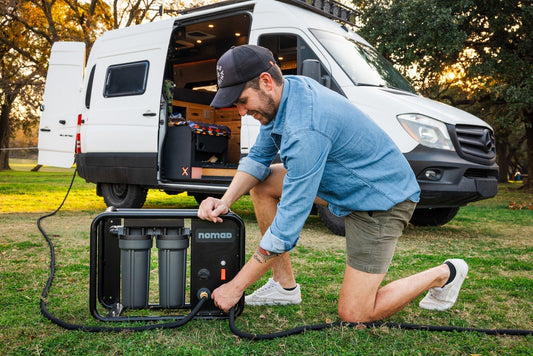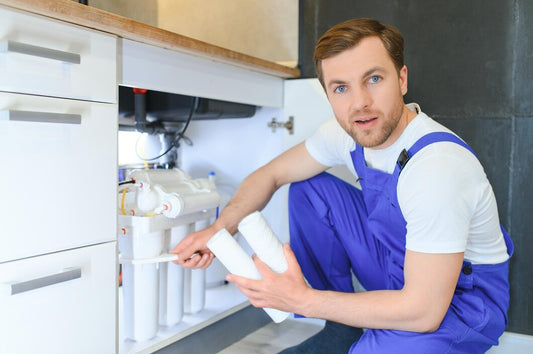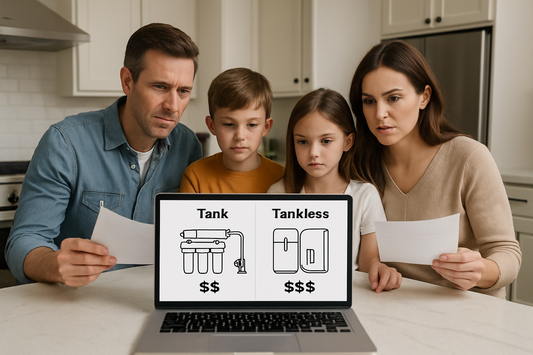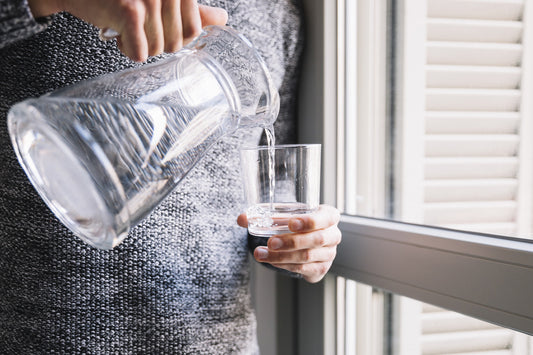The $500 Mistake That Changed Everything
Sarah thought she was being smart when she ignored her whole house water filter for eight months. "It's just a filter," she told herself, "how bad could it get?" Then came the morning when brown water poured from her kitchen faucet, and her plumber's estimate hit her like a cold shower: $500 for what should have been a simple replacement whole house water filter task.
You don't have to learn the hard way like Sarah did. Smart homeowners today are taking control of their water systems, and the secret isn't calling expensive professionals—it's understanding that whole house filter replacement is actually one of the most empowering DIY skills you can master.
Why Smart Homeowners Are Ditching Expensive Service Calls
Modern home maintenance has evolved. While previous generations relied on service professionals for every small repair, today's homeowners—especially women who make 85% of household health decisions—are discovering that whole house water replacement filter maintenance is surprisingly straightforward and incredibly rewarding.
The numbers speak for themselves: the average professional service call costs $150-300, while a DIY replacement takes 30 minutes and costs under $50. More importantly, when you understand your home's water system, you're not just saving money—you're taking control of your family's health and your home's value.

Image by freepik
The Hidden Costs of Procrastination
Before we dive into the solution, let's talk about what happens when you delay replacement whole house water filter maintenance. Beyond the obvious water quality issues, neglected filters create a cascade of expensive problems:
Appliance Damage: Your dishwasher, washing machine, and water heater work harder against sediment buildup, shortening their lifespan by years.
Plumbing System Stress: Clogged filters force your entire system to work under pressure, potentially causing leaks in unexpected places.
Health Concerns: Old filters become breeding grounds for bacteria and lose their ability to remove contaminants effectively.
Property Value Impact: Home inspectors specifically check water filtration systems, and poor maintenance can flag your home as "high maintenance" to potential buyers.
Your Complete Smart Homeowner's Replacement Guide
Essential Tools and Materials
Smart preparation prevents frustration. Here's your complete toolkit:
- Replacement filter (sized for your specific system)
- Filter housing wrench (the game-changing tool most homeowners don't know they need)
- Large bucket or towels (trust us, you'll need these)
- Plumber's silicone grease (prevents future leaks)
- Safety glasses and gloves (protect yourself like a pro)
- Smartphone or camera (document before and after for reference)
Step 1: Master the Water Shutoff
This is where many DIYers panic, but it's actually simple. Locate your main water shutoff valve—it's typically near where your water line enters your home. Turn it clockwise until it stops. Pro tip: Test a faucet to confirm the water is off before proceeding.
Step 2: Pressure Relief Strategy
Open a faucet on the lowest level of your home to release any remaining pressure in the lines. This prevents the "surprise shower" that catches unprepared homeowners off guard during whole house filter replacement.
Step 3: The Professional Removal Technique
Position your bucket strategically under the filter housing. Using your housing wrench, turn the filter canister counterclockwise. The key here is steady, controlled movement—rushing leads to spills and potential cross-threading when you reinstall.
Step 4: Inspection and Cleaning
This step separates smart homeowners from hasty ones. Clean the housing thoroughly with mild soap and water, checking the O-ring seat for debris or damage. A clean housing ensures your new filter seals properly and performs at peak efficiency.
Step 5: The Professional Installation
Apply a thin layer of silicone grease to the new filter's O-ring—this is the secret that prevents future leaks and makes your next replacement whole house water filter task even easier. Install the new filter, ensuring it seats properly before hand-tightening the housing.
Step 6: System Restoration and Testing
Slowly restore water pressure by partially opening your main valve first. Watch for leaks, then gradually increase to full pressure. Run water through several faucets to clear any air bubbles and verify consistent flow throughout your home.

Image by freepik
Advanced Smart Home Integration
Modern homeowners are taking whole house water replacement filter maintenance to the next level with simple tracking systems. Set calendar reminders every 3-6 months, take photos of your filter change dates, and keep a simple log of your water quality observations.
Some tech-savvy homeowners even install smart water monitoring systems that alert them when it's time for replacement, making the process completely proactive rather than reactive.
When to Choose Professional vs. DIY
While most replacement whole house water filter tasks are perfect for DIY, smart homeowners know when to call professionals:
DIY is perfect when: You have standard equipment, clear access to your filter housing, and confidence following systematic steps.
Call professionals if: You discover unexpected leaks, your housing appears damaged, or you encounter electrical components you're unfamiliar with.
The beauty of understanding the process yourself is that you can communicate intelligently with professionals when needed, often saving money on diagnostic fees.
Investment Protection: Making Your Filters Last Longer
Smart homeowners maximize their investment by understanding what affects filter lifespan. Your local water quality, household size, and usage patterns all impact replacement frequency.
Homes with high sediment levels might need changes every 2-3 months, while others with excellent source water can extend to 6 months safely. The key is monitoring your water pressure and visual water quality rather than blindly following generic schedules.
The Health and Financial ROI
Consider this: the average American family spends $400+ annually on bottled water, plus hundreds more on appliance repairs caused by poor water quality. Proper whole house filter replacement maintenance eliminates both expenses while providing superior water quality throughout your entire home.
When you factor in the appliance protection, plumbing system health, and family health benefits, the 30 minutes every few months you invest in maintenance pays dividends that compound over years.

Image by freepik
Troubleshooting Like a Pro
Even with perfect technique, issues can arise. Here's how smart homeowners handle common challenges:
Low water pressure after replacement: Check that you've removed all packaging from the new filter and that it's properly seated. Sometimes new filters need a few minutes of flow to reach full capacity.
Minor leaks: Usually indicate an improperly seated O-ring or insufficient lubrication. Turn off water, remove the housing, recheck the O-ring position, and apply additional silicone grease.
Unusual taste or odor: New filters often need 5-10 minutes of flow to clear manufacturing residues. This is normal and temporary.
Your Next Steps to Water System Mastery
You now have the knowledge to confidently handle replacement whole house water filter maintenance like a seasoned homeowner. But knowledge without action is just expensive education.
Start by examining your current filter system and noting your last replacement date. If it's been more than six months, or if you notice decreased water pressure or quality, it's time to take action.
Remember Sarah from our opening story? She now changes her filters every four months, has saved over $1,200 in service calls, and has become the go-to resource for water system advice in her neighborhood. More importantly, she has complete confidence in her home's water quality and her ability to maintain it.
The difference between homeowners who struggle with expensive water system problems and those who master their home's systems isn't luck—it's taking smart, proactive action with the right knowledge.
Your family's health, your home's value, and your budget will thank you for making this simple but powerful investment in your homeowner skills.






